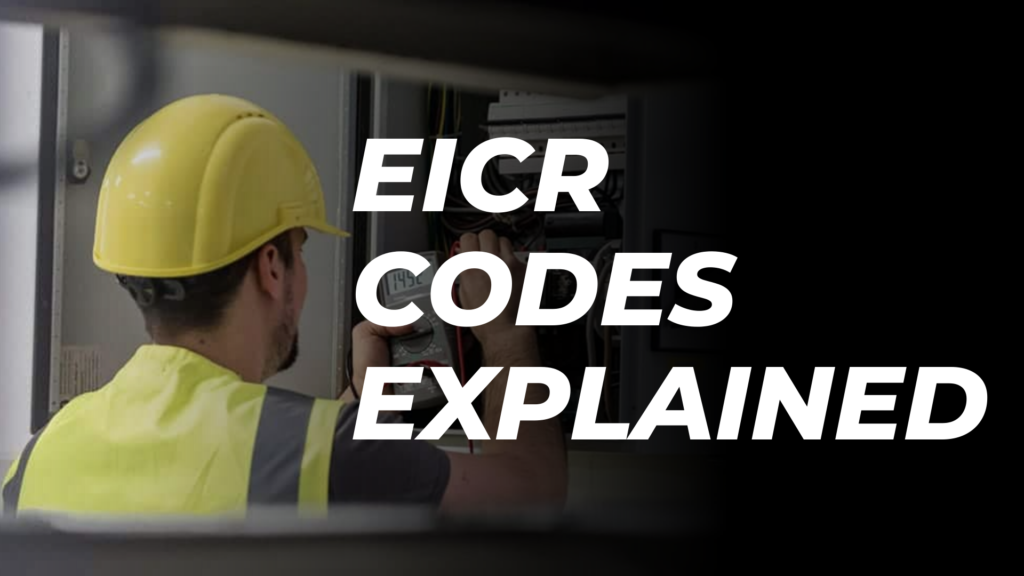When you receive an Electrical Installation Condition Report (EICR) for your property in London, it can seem a bit overwhelming at first glance. One of the most crucial parts of the report is the coding system used to identify electrical issues. In this post, we’ll break down what these codes mean and guide you in the actions you should take based on each code.

Table of Contents
What Are EICR Codes?
Electrical Installation Condition Reports (EICR) are essential documents that evaluate the safety and condition of electrical installations within a property. One of the key features of an EICR is the coding system used to categorize the severity and nature of any electrical issues identified during the inspection.
These codes serve a crucial function: they help property owners quickly understand the urgency of the problems found and the type of repairs or actions needed to rectify them. By clearly indicating the severity of each issue, the codes allow property owners to prioritize repairs and ensure that their electrical systems are safe and compliant with current regulations.
The main codes used in EICR reports are:
Code C1: Immediate Danger
A Code C1 classification indicates an immediate risk of injury or fire due to a serious electrical fault. This is the most severe code and signifies that urgent action is required to eliminate the hazard.
Common Examples:
- Exposed live wires that could cause electric shock
- Equipment with damaged insulation that could lead to short circuits or fires
Consequences if Ignored:
- High risk of electrical shock or fire
- Legal liability for property owners in case of accidents
Immediate Action Required:
- The inspector will usually take temporary measures to make the situation safe, such as isolating the dangerous part of the installation.
- Property owners must arrange permanent repairs as soon as possible to ensure ongoing safety.
Code C2: Potential Danger
A Code C2 issue denotes a potential danger present. While it may not pose an immediate threat, it still represents a significant risk that requires prompt attention to prevent future hazards.
Common Examples:
- Absence or inadequacy of earthing or bonding in the electrical installation
- Damaged sockets, switches, or other components that could deteriorate further
Consequences if Ignored:
- Increased risk of future electrical faults or accidents
- Potential escalation into a more severe issue over time
Prompt Action Required:
- Property owners should schedule repairs as soon as possible, typically within a few weeks.
- Addressing these issues promptly helps maintain the safety and integrity of the electrical system.
Code C3: Improvement Recommended
A Code C3 classification is less severe and indicates that an improvement is recommended to enhance the overall safety and performance of the electrical installation. Unlike C1 and C2 codes, a C3 issue does not pose an immediate or potential danger but suggests areas where improvements could be beneficial.
Common Examples:
- Older wiring that still functions correctly but does not meet modern standards
- Minor defects in electrical fittings or fixtures that do not immediately compromise safety
Consequences if Ignored:
- While there is no immediate risk, neglecting these recommendations may decrease efficiency or minor inconveniences over time.
Consideration for Future Action:
- Property owners should consider making these improvements at their convenience or during planned renovations.
- Taking proactive steps to address C3 recommendations can improve the long-term safety and efficiency of the electrical system.
By understanding these codes and their implications, property owners can take informed actions to ensure their electrical installations are safe and up to standard. This protects the occupants and ensures compliance with current regulations, avoiding potential legal issues.
This expanded section provides a more detailed explanation of EICR codes, how they function, and why they are important.
Summary of Actions Based on Codes
Here’s a quick summary of what actions to take based on each code:
- C1 (Immediate Danger): Immediately fix or isolate the issue.
- C2 (Potential Danger): Schedule repairs as soon as possible.
- C3 (Improvement Recommended): Plan improvements at your convenience.
The Importance of Addressing EICR Codes
Understanding and acting on the codes in your EICR report is crucial for maintaining the safety and integrity of your property’s electrical system. Ignoring these codes can lead to serious consequences, including electrical fires, injuries, and legal liabilities.
By promptly addressing C1 and C2 issues and considering C3 recommendations, you ensure that your property remains safe for occupants and complies with current regulations.
Conclusion
Navigating the codes in an EICR report doesn’t have to be daunting. By understanding what each code means and taking appropriate actions, you can maintain a safe and efficient electrical system on your property.
If you need a reliable EICR testing service in London, Budget PAT Testing offers professional inspections and detailed reports to help you stay compliant and safe. Contact us today to schedule your EICR inspection!
Electrical Safety Guide for Landlords (Opens an external link)

0 Comments